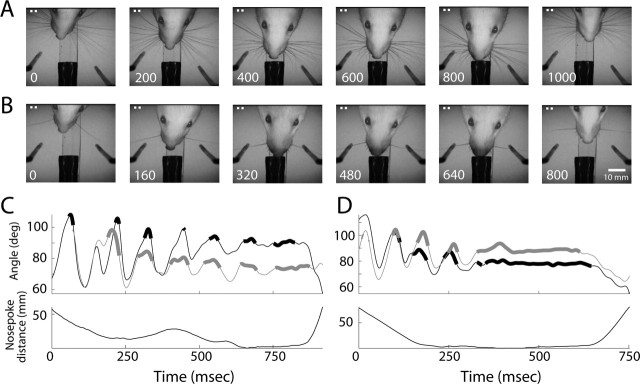Figure 4.
Head and whisker movements during task performance. A, B, Two examples of head and whisker movements during object localization trials. Each row depicts a single trial and shows six frames from the moment the rat entered the discrimination area, until it left. A, A rat with all whiskers intact (the ALL condition). B, A different rat with a single whisker intact on each side (ALL–C2). Because the trial durations were different for these two trials, intervals between still frames are different. The scale bar applies to all frames. C, An example of whisking behavior during object localization of a single-whisker rat, initially trained with all whiskers intact (ALL–C2). D, Example of whisking behavior of an ALL–ARC–C2 rat. In both C and D, the C2 whisker on both sides (gray and black lines) was tracked from when the head entered the video frame and until it left. Top panels show the time-varying angle of the whiskers, relative to the head. Thick angle traces indicate moments when a whisker contacted one of the poles. The bottom panels show the time-varying distance of the nose from the nose poke.

